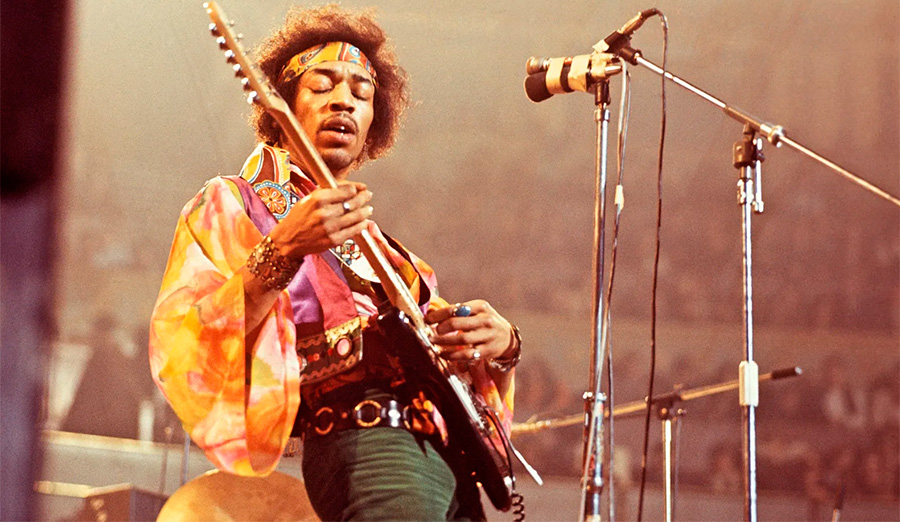In the vast realm of music, few genres have achieved the iconic status and global impact of rock music. From the British Invasion that swept the world in the 1960s to the distinctive American rock sound that evolved alongside it, and the unique character of Australian rock, the regional influence on rock music is profound. This exploration delves into the rich tapestry of rock music scenes across different regions and examines how regional culture has left an indelible mark on the evolution of this beloved genre.
The British Invasion: A Cultural Tsunami
The British Invasion of the 1960s is a milestone in rock music history that cannot be overlooked. Bands like The Beatles, The Rolling Stones, The Who, and The Kinks not only conquered the American music scene but also left an enduring legacy. Their impact was not just musical but cultural as well.
The British Invasion brought a fresh and exciting sound that was deeply rooted in British culture. The image of The Beatles, with their mop-top haircuts and tailored suits, was a stark departure from the American rock ‘n’ roll style of the time. The lyrics of many British Invasion songs celebrated the British way of life, and this cultural identity was a key component of their success.

American Rock: The Birthplace of Diverse Sounds
While the British Invasion dominated the charts, American rock music was quietly, yet powerfully, evolving on its own terms. It’s important to recognize that American rock wasn’t a monolith but rather a spectrum of sounds, from the bluesy rock of the deep South to the folk-infused rock of the West Coast.
The cultural diversity of the United States contributed significantly to the development of American rock music. In the Southern states, the deep connection to the blues gave rise to rock legends like Jimi Hendrix, Janis Joplin, and Creedence Clearwater Revival. Meanwhile, the counterculture movement of the 1960s and ’70s, which was a melting pot of ideas, added elements of folk, jazz, and psychedelia to American rock.
Australian Rock: A Distinctive Identity
Australia has its own unique rock music scene, marked by a character that sets it apart from both British and American rock. While British and American rock had already established themselves on the global stage, Australian rock was carving out its niche, drawing from its cultural and geographical surroundings.
Bands like AC/DC, INXS, and Men at Work introduced the world to the Australian rock sound. The raw energy, gritty lyrics, and unmistakable accents reflected the spirit of the land Down Under. Australia’s vast landscapes, its unique blend of Indigenous and European cultures, and its laid-back lifestyle all left their marks on Australian rock music.

Regional Culture and the Evolution of Rock Music
The influence of regional culture on rock music goes beyond just the sound of the music. It encompasses the entire package – from the lyrics and image of the artists to the cultural and societal backdrop against which the music was created. This cultural influence manifests in several ways:
Lyricism: The lyrics of rock songs often reflect the experiences, values, and social issues of their respective regions. The British Invasion touched on themes of love and societal change, American rock often addressed political and cultural issues, and Australian rock explored themes of identity and connection to the land.
Musical Styles: The musical styles of rock bands in different regions were shaped by the musical traditions and influences around them. For example, the British Invasion bands were influenced by American rock ‘n’ roll and blues, but they added their own British twist. American rock drew from a range of styles, from folk to blues, creating a diverse landscape of sounds.
Image and Identity: The image of rock bands was often a reflection of their regional culture. The British Invasion bands appeared clean-cut and well-dressed, mirroring the British cultural norms of the time. American rock bands embraced a more diverse range of looks, reflecting the cultural and countercultural movements of their era. Australian rock bands often embodied a rugged, outdoorsy image, reflecting the Australian way of life.
Social and Political Influences: Rock music has often been a vehicle for social and political change. The cultural and societal factors in each region influenced the issues that rock musicians chose to address. American rock, for instance, played a significant role in the civil rights movement and anti-war protests.
Impact on Global Music Landscape
The regional influence on rock music has not been limited to just those specific regions. The unique sounds, cultural messages, and innovation in rock music from different parts of the world have had a profound impact on the global music landscape. The exchange of ideas and musical elements between regions has enriched the genre as a whole.
The enduring popularity of rock music is a testament to its adaptability and its ability to connect with people from different cultural backgrounds. Rock music’s global reach and influence can be attributed in part to the diverse regional scenes that have contributed to its evolution.
Rock music’s rich history is a testament to the powerful influence of regional culture on the genre’s development. The British Invasion, American rock, and Australian rock represent just a few of the many regional scenes that have shaped the sound and identity of rock music. From the lyrics to the image and the societal issues they addressed, these regional scenes have left an indelible mark on the world of music.
This in-depth exploration of rock music scenes and their cultural influences on the evolution of rock music is designed to provide valuable insights and engage readers with its rich content. By delving into the regional roots of rock, we not only pay homage to the past but also gain a deeper appreciation of how this iconic genre continues to evolve and captivate audiences around the world.

